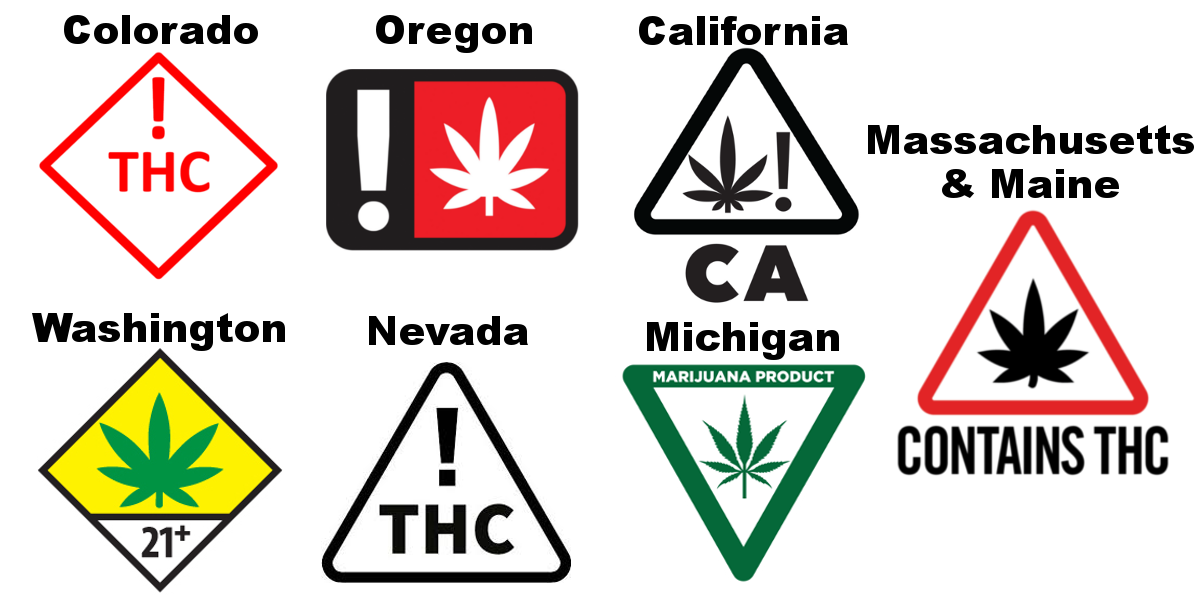The Seven "Universal" Symbols For Cannabis Products
Last week, cannabis regulators in Maine unveiled the universal symbol that must appear on all cannabis products sold for adult use in the state. Rather than create their own symbol from scratch, the Office of Marijuana Policy decided to adopt the symbol that’s already being used in Massachusetts. This may not seem that exciting, but it’s actually a really big deal.
Maine is the 8th state in the country to adopt a universal symbol for legal cannabis products, but it’s the first to adopt another state’s symbol instead of creating its own. That’s right — while nearly every state to legalize cannabis for adults adopted a “universal” symbol, every one was unique, making none of them actually universal.
Here are the symbols used in adult use marijuana programs across the country:
Alaska, which legalized in 2014, doesn’t require a standard symbol for all cannabis products. Vermont legalized marijuana in 2018 but doesn’t allow commercial sales, so there are no cannabis products to label. The legalization law passed by Illinois this year did not explicitly require a universal symbol, but regulators could adopt a symbol in the future using their authority over labels and packaging.
While they’re all different, there are many common elements: five have marijuana leaves, three have the letters “THC,” four have exclamation points, and five of them are within a triangle. I like some of them more than others, but they all accomplish the same goal, which is simply screaming “this is a cannabis product!” to anyone who looks at it.
Yet even if each symbol gets the job done, there are some drawbacks to using different symbols in different states. While cannabis products aren’t allowed to cross state lines, there are many “multi-state operators” that run cultivation facilities and dispensaries across the country — I work for one. Using the same symbol for every state would make it easier to design labels that are consistent across markets, and would also benefit the many packaging companies that serve cannabis operators in multiple states (since you can still ship empty containers wherever you want).
A truly universal symbol would also help consumers. People visiting a state with legal cannabis would know what to look out for on packages, and if products did make their way across state lines, there wouldn’t be any confusion as to whether or not it contained cannabis. This is particularly important for parents who want to teach their small children not to eat things with that symbol on them, just like the universal poison warning symbol on cleaning products.
In the long run, a national universal symbol seems inevitable — once the federal government legalizes cannabis, it will certainly want to set standards for labels, and if there isn’t a common symbol already adopted by the states, the FDA or another entity will create one. States proactively adopting a single universal symbol could influence federal regulators to just adopt the existing one, making for a slightly smoother transition to the new regulatory structure.
We’re already starting to see some regional cooperation on cannabis regulations, with the governors of New York, Connecticut, New Jersey, and Pennsylvania recently meeting for a summit on how to structure their legalization bills. Those states should follow Massachusetts & Maine’s lead, adopting the same symbol and creating a standard across the Northeast. This momentum could even convince other states to change their existing symbols, so that one day we’ll finally have a truly universal symbol for cannabis products.

